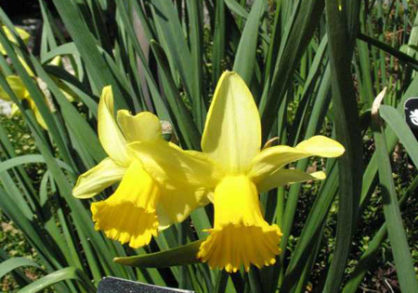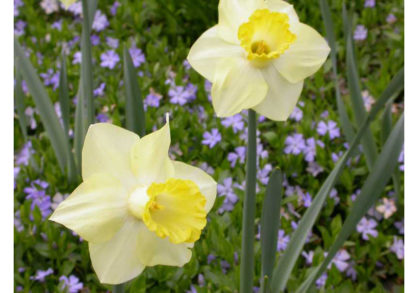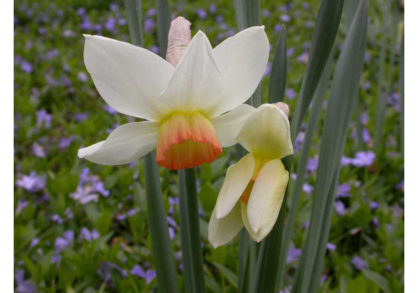Yellow dominates the color palette throughout our gardens from nearly 100,000 daffodils blooming now.
Native to the Mediterranean region, the daffodil has long been a popular garden plant for its bloom’s unmatched beauty, leading to more than 32,000 registered varieties cultivated by plant breeders worldwide. (Video below by Alison Falkenburgh, Cornell Botanic Gardens)
Early records indicate daffodils were grown in Greek gardens as early at 300 B.C. They are classified in the genus Narcissus, named from the Greek myth about a beautiful youth of the same name who was so entranced with his own reflection that the gods turned him into this flower. The common name daffodil originated from the Dutch words “affo dyle,” meaning “that which comes early.”
Daffodils eventually spread across Europe by way of Roman soldiers, who falsely believed these toxic plants possessed healing properties. They were first brought to the United States from England during the colonial era.
Daffodils abound at Cornell Botanic Gardens. We grow 56 varieties, including 34 planted in large groupings that blanket the pathway from Kienzle Overlook to the gardens below. You will also find 20 varieties in the Young Flower Garden, and more in the Groundcover Collection, Bioswale, Hillside Garden, and Winter Garden.
Whether you are able to enjoy daffodils within our gardens, or explore them from home, we invite you to revel in the beauty of these harbingers of spring.
Explore Daffodils
Explore a sampling of the 56 varieties daffodils we grow to compare their variety of shapes, sizes and subtle color differences.


